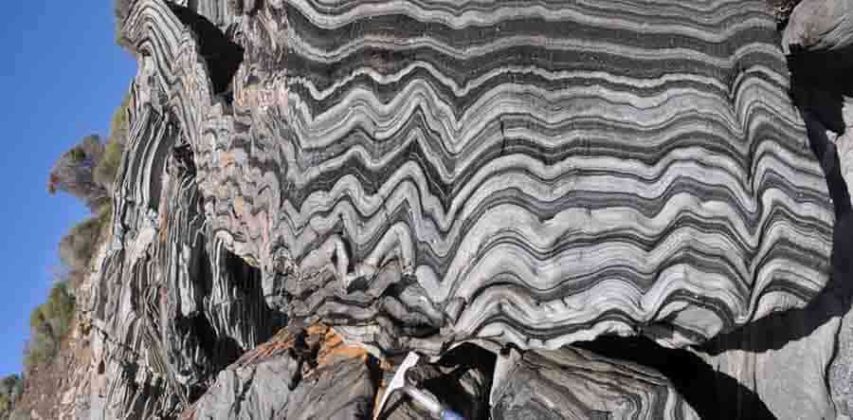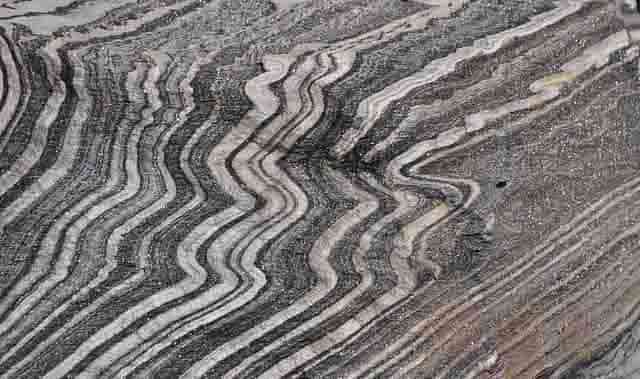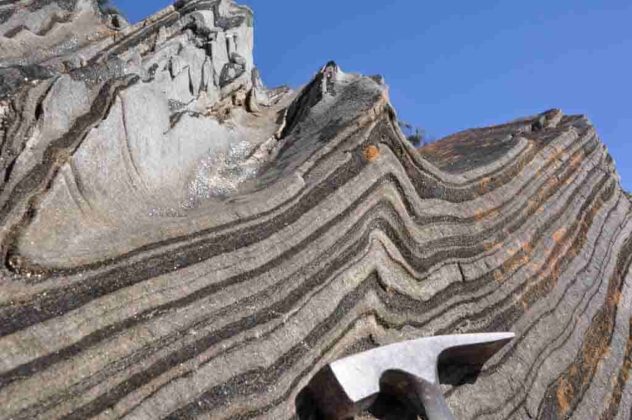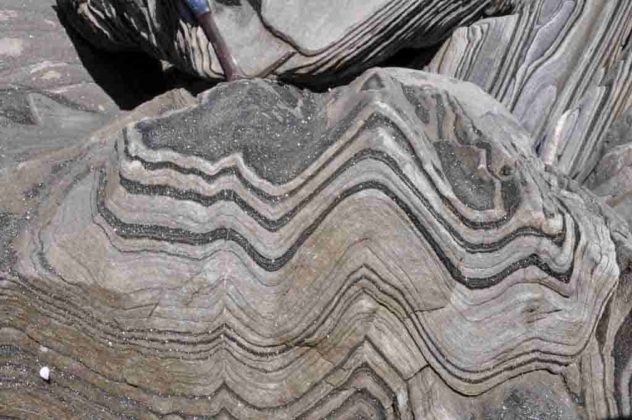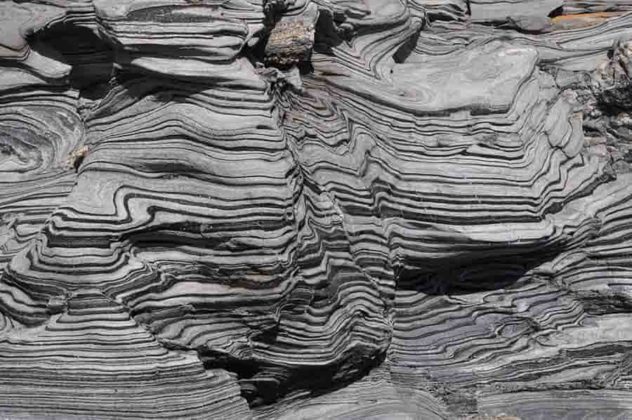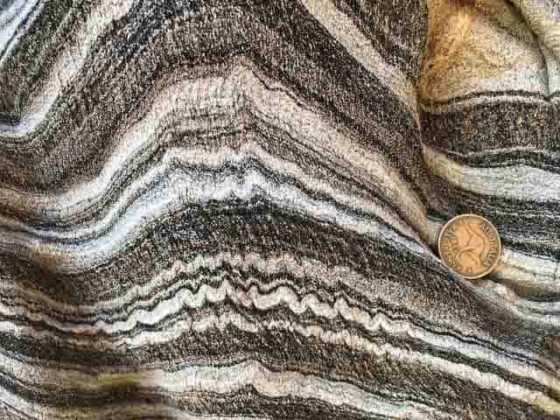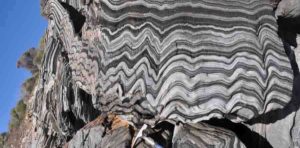
Zebra Schist
Zebra Schist is The tightly folded, thinly bedded schists that are derived from sedimentary rocks that are exposed in Kangaroo Island are known as zebra schists. A quartz-rich and biotite-rich layering largely reflects original sedimentary layering rather than metamorphic differentiation as the secondary biotite preserves and outlines a variety of sedimentary structures.
Small cross-beds troughs and climbing ripples show a sequence facing south. The Geological Society of Australia
has designated this section of the coastline as a geological monument.
Where is Zebra Schist found?
It Found in Harvey’s Return, Kangaroo Island, South Australia
What is Schist?
Schist is a metamorphic rock of medium grade. In a preferred orientation, Schist has medium to large, flat, sheet-like grains (nearby grains are approximately parallel). It is defined by having platy and elongated minerals (such as micas or talc) of more than 50 percent, often finely interleaved with quartz and feldspar.
These minerals include micas, chlorite, talc, hornblende, graphite, and other lamellar (flat, planar). In drawn-out grains, quartz often occurs to such an extent that a particular shape is produced called quartz schist. Often schist is garnetiferous. At a higher temperature, schist forms and has larger grains than phyllite. Geological foliation with medium to large grained flakes in a preferred sheetlike orientation is called schistosity (metamorphic arrangement in layers).


